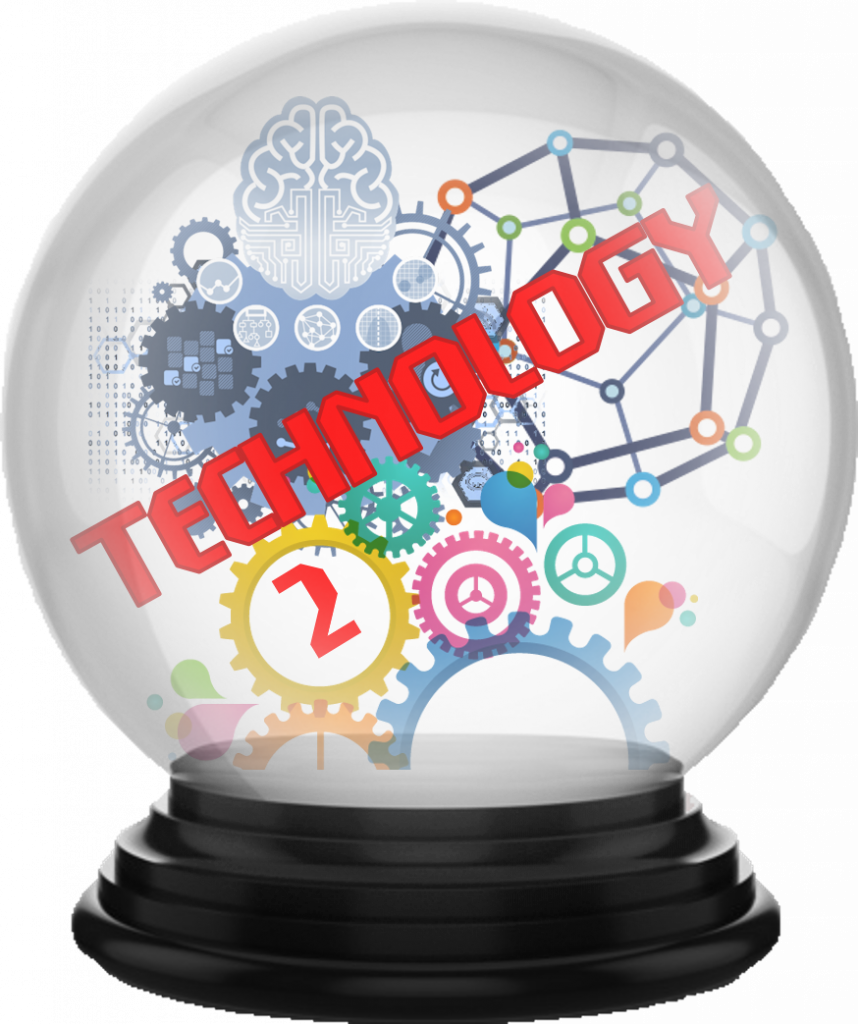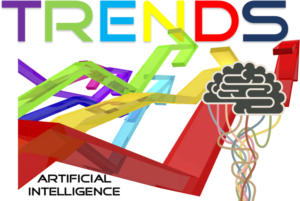Albert Einstein once stated, “It has become appallingly obvious that our technology has exceeded our humanity.” Undoubtedly, many people today continue to hold that opinion. Nevertheless, the advance of technology is unrelenting and it is up to us to ensure human principles and values are not lost as the world progresses. Technology is neither inherently good nor inherently evil. As I noted in Part One of this article, technology is too broad of a topic to be covered in a short article. In order to narrow the discussion, I am looking at the technology trends identified by two of the largest consulting firms — Deloitte and Gartner. In the first part of this two-part article, I looked at the nine technology trends identified by Deloitte. In final part of the article, I will discuss the nine technology trends identified by Gartner analysts. Although there is some overlap between the two lists, there is also a considerably different focus on how technologies can and will be used.
Gartner Technology Trends
Trend 1: Internet of Behaviors. Most people are familiar with the terms “Internet” and “Internet of Things” (IoT). Gartner analysts insist “how” the Internet is being used deserves a term of its own the “Internet of Behaviors” (IoB). They explain, “The IoB is about using data to change behaviors. With an increase in technologies that gather the ‘digital dust’ of daily life — data that spans the digital and physical worlds — that information can be used to influence behaviors through feedback loops. For example, for commercial vehicles, telematics can monitor driving behaviors, from sudden braking to aggressive turns. Companies can then use that data to improve driver performance, routing and safety. The IoB can gather, combine and process data from many sources including: Commercial customer data; citizen data processed by public-sector and government agencies; social media; public domain deployments of facial recognition; and location tracking. The increasing sophistication of the technology that processes this data has enabled this trend to grow.”[1] They go on to note that such data can also be used for nefarious purposes. They write, “IoB does have ethical and societal implications depending on the goals and outcomes of individual uses. The same wearables that health insurance companies use to track physical activities to reduce premiums could also be used to monitor grocery purchases; too many unhealthy items could increase premiums. Privacy laws, which vary from region to region, will greatly impact the adoption and scale of the IoB.” Investigations have also shown that political parties and state actors can use the IoB to affect voter behavior and disrupt democratic processes.
Trend 2: Total experience. Customer experience has risen to the top of the priority list for many companies. Cynthia Thomas explains, “In today’s world, customers expect companies to focus on experience. In order to meet that expectation, a company’s UX [user experience] and CX [customer experience] efforts cannot be isolated in a single department, or in one or two positions. The experiences that resonate and are successful for customers are those that are seamless across all touchpoints; experiences should seem to originate from the whole company, not just from whichever department they sprung from within an organization. Companies cannot lean on the experiences customers have with the ‘customer satisfaction team’ and call it a day. Every role within an organization should work together and towards the vision of how the brand interacts with its customers.”[2] Gartner analysts call this “total experience.” They explain, “Total experience combines multiexperience, customer experience, employee experience and user experience to transform the business outcome. The goal is to improve the overall experience where all of these pieces intersect, from technology to employees to customers and users. … Tightly linking all of these experiences — as opposed to individually improving each one in a silo — differentiates a business from competitors in a way that is difficult to replicate, creating sustainable competitive advantage.”
Trend 3: Privacy-enhancing computation. Deloitte analysts note, “Conventional castle-and-moat cybersecurity models, which rely on secure network perimeters and virtual private network-based employee and third-party remote access, are proving to be no match for evolving cyberthreats, particularly as business models and workforce dynamics evolve.”[3] From both monetary and reputational standpoints, allowing personal data to be breached can be costly. This has forced organizations to reexamine and strengthen their cybersecurity efforts. Gartner analysts note, “Privacy-enhancing computation features three technologies that protect data while it’s being used. The first provides a trusted environment in which sensitive data can be processed or analyzed. The second performs processing and analytics in a decentralized manner. The third encrypts data and algorithms before processing or analytics. This trend enables organizations to collaborate on research securely across regions and with competitors without sacrificing confidentiality. This approach is designed specifically for the increasing need to share data while maintaining privacy or security.” Privacy rules will only become stricter in the years ahead.
Trend 4: Distributed cloud. Cloud computing is not new; however, you now read more about private cloud, public cloud, and hybrid cloud environments. Gartner analysts write, “Distributed cloud is where cloud services are distributed to different physical locations, but the operation, governance and evolution remain the responsibility of the public cloud provider.” They also insist, “Distributed cloud is the future of cloud.” They explain, “Enabling organizations to have these services physically closer helps with low-latency scenarios, reduces data costs and helps accommodate laws that dictate data must remain in a specific geographical area. However, it also means that organizations still benefit from public cloud and aren’t managing their own private cloud, which can be costly and complex.”
Trend 5: Anywhere operations. As I noted in Part One of this article, empty offices and remote work have characterized many organizations during the pandemic. Gartner analysts call this the “anywhere operations model.” They explain, “An anywhere operations model will be vital for businesses to emerge successfully from COVID-19. At its core, this operating model allows for business to be accessed, delivered and enabled anywhere — where customers, employers and business partners operate in physically remote environments. The model for anywhere operations is ‘digital first, remote first.’ … Digital should be the default at all times. That’s not to say physical space doesn’t have its place, but it should be digitally enhanced, for example, contactless check-out at a physical store, regardless of whether its physical or digital capabilities should be seamlessly delivered.” A digital first mindset isn’t about technology per se. Tricia Wang (@triciawang), a self-described Tech Ethnographer & Sociologist, explains, “A lot of companies treat digital as if they are ‘doing digital’ — this is ‘digitization’ at its worst — as if it’s some checklist of things to do. It’s very transactional, and people are so busy doing digital they don’t even know WHY they are doing it in the first place! Whereas [some companies] embrace ‘being digital’ — this is ‘digital transformation’ at its best — it’s a total paradigm shift in the culture and operations — it’s not just about buying the latest digital tool, but about creating a new system, new cadence, new mindset.”[4]
Trend 6: Cybersecurity mesh. Deloitte analysts tout a zero-trust environment. They explain, “A zero trust cybersecurity posture provides the opportunity to create a more robust and resilient security, simplify security management, improve end-user experience, and enable modern IT practices.”[5] Gartner analysts also believe strengthening cybersecurity is a growing trend. They write, “Cybersecurity mesh is a distributed architectural approach to scalable, flexible and reliable cybersecurity control. Many assets now exist outside of the traditional security perimeter. Cybersecurity mesh essentially allows for the security perimeter to be defined around the identity of a person or thing. It enables a more modular, responsive security approach by centralizing policy orchestration and distributing policy enforcement. As perimeter protection becomes less meaningful, the security approach of a ‘walled city’ must evolve to current needs.”
Trend 7: Intelligent composable business. A composable business is an agile business. Gartner analysts explain, “An intelligent composable business is one that can adapt and fundamentally rearrange itself based on a current situation. As organizations accelerate digital business strategy to drive faster digital transformation, they need to be agile and make quick business decisions informed by currently available data. To successfully do this, organizations must enable better access to information, augment that information with better insight and have the ability to respond quickly to the implications of that insight. This will also include increasing autonomy and democratization across the organization, enabling parts of the businesses to quickly react instead of being bogged down by inefficient processes.” Cognitive technologies are essential to achieve this goal.
Trend 8: AI engineering. No list of technology trends would be complete without some reference to cognitive technologies. Gartner analysts write, “A robust AI engineering strategy will facilitate the performance, scalability, interpretability and reliability of AI models while delivering the full value of AI investments. AI projects often face issues with maintainability, scalability and governance, which makes them a challenge for most organizations. AI engineering offers a pathway, making AI a part of the mainstream DevOps process rather than a set of specialized and isolated projects. It brings together various disciplines to tame the AI hype while providing a clearer path to value when operationalizing the combination of multiple AI techniques. Due to the governance aspect of AI engineering, responsible AI is emerging to deal with trust, transparency, ethics, fairness, interpretability and compliance issues. It is the operationalization of AI accountability.”
Trend 9: Hyperautomation. The prefix “hyper” means high, beyond, excessive, or above normal. In the case of hyperautomation, it means automating whatever can be automated. Gartner analysts explain, “Hyperautomation is the idea that anything that can be automated in an organization should be automated. Hyperautomation is driven by organizations having legacy business processes that are not streamlined, creating immensely expensive and extensive issues for organizations. Many organizations are supported by a ‘patchwork’ of technologies that are not lean, optimized, connected, clean or explicit. At the same time, the acceleration of digital business requires efficiency, speed and democratization. Organizations that don’t focus on efficiency, efficacy and business agility will be left behind.” One of the technologies often associated with hyperautomation is robotic process automation (RPA). Katie Johns observes, “Robotic process automation [is] a major technology tool that companies have had their focus on. Now, it has moved from task-based automation to process-based automation. The magnitude of automation is set to go even higher as hyperautomation increases in the coming year.”[6]
Concluding Thoughts
In the future, which technologies prove to be most valuable or impactful depend, in large measure, on what economic sector you are talking about. Different technologies will impact industries in different ways. Even so, the trends identified by Deloitte and Gartner analysts are useful starting points for discussions about how the world is changing thanks to technology. Whether these technologies make the world a better place or confirm Einstein’s assertion that technology has exceeded our humanity rests in our hands.
Footnotes
[1] Staff, “Gartner Top Strategic Technology Trends for 2021,” Gartner, 19 October 2020.
[2] Cynthia Thomas, “The Importance of Designing an Experience Culture,” UX Magazine, 20 December 2010.
[3] Staff, “Zero trust: Never trust, always verify,” Deloitte, 2020.
[4] Trevor Miles, “Let’s be clear: Digitization is not the same as Digital Transformation,” Kinaxis Blog, 8 December 2017.
[5] Deloitte Staff, op. cit.
[6] Katie Johns, “Top 15 Emerging Technology Trends to watch in 2021 and beyond,” Ishir Blog, November 2020.





